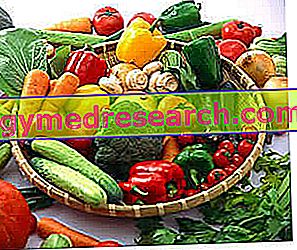Bioavailability is defined as the fraction of a nutrient that the body is able to absorb and use for its own physiological functions.
Bioavailability may vary in relation to many factors, depending in part on the nature of the food and partly on the characteristics of the organism that takes it. As such, these factors are distinguished in:
intrinsic, that is related to the individual: age, sex, physiological, nutritional and health status, intestinal microflora, genotype, possible intolerances, etc.
and extrinsic, ie linked to the nutritional source: chemical form of the mineral, interaction with other nutrients, cooking, pH, technological treatments, presence of anti-nutritional factors that limit absorption or, vice versa, of others that enhance it.
The data reported in the common nutritional tables tell us how many nutrients are contained in a given food, but they do not provide us with any information on the bioavailability of these substances. Thus, for example, 100 grams of spinach contain amounts of iron about two times higher than those present in a similar quantity of beef. However, bioavailability is considerably higher for iron of animal origin (20-25%) than that obtained from plant sources (3-5%).
In order for a food or a set of foods to be able to cover the needs of a nutrient, this must be present in correct quantities and in a sufficiently bioavailable form, also in relation to the intrinsic factors of the subject.
In general, while the bioavailability of macronutrients and vitamins tends to be very good, the same cannot be said for most minerals.
In relation to the many factors that can influence it, the bioavailability of a nutrient is very difficult to assess. As for the state of health of the organism, there are disorders and pathologies that diminish it and others that increase it. The first group includes: diarrhea, celiac disease, food intolerances, intestinal resections, bariatric surgery, short bowel syndrome, chronic inflammatory bowel diseases (Crohn's disease, ulcerative colitis), chronic alcoholism, constipation treated with laxatives, contamination syndrome bacterial small intestine, intestinal parasitosis, hypochloridria, achlorhydria, atrophic gastritis, hepatic and pancreatic insufficiencies, intra and extrahepatic cholestasis, tropical sprue. Among the diseases that increase the absorption of nutrients, there are - for example - familial sitosterolemia (exalted absorption of cholesterol and plant sterols) and genetic or hereditary hemochromatosis (exalted absorption of iron). Also different drugs and supplements can modulate the bioavailability of the various micronutrients.
| Places of Absorption of Food Substances | |||
| Small proximal | Soft medium | Soft distal | Colon |
Lipids Carbohydrates Peptides and amino acids Iron Folic acid Football water Electrolytes | Carbohydrates Peptides and amino acids Football water Electrolytes | Bile salts Vitamin B12 water Electrolytes | water Electrolytes Some products of fermentation of the local microbial flora |
As for cooking, this has a generally positive action on the bioavailability of macronutrients, as it increases the digestibility of starches and proteins. Fats, on the other hand, especially when exposed to high temperatures, undergo a degradation process that limits their bioavailability. For vitamins and other micronutrients, generally there are considerable losses in the cooking water and degradations related to heat. Minerals, unlike vitamins, are not altered by cooking or light, but are easily eliminated with urine, sweat and feces. Bioavailability undergoes the greatest oscillations for bivalent cations and for trivalent qurls, such as Ca2 +, Zn2 +, Mg2 + and Fe3 +.
Flour refining deprives foods of much of the vitamin and mineral content. Another typical mineral problem is that some share the same absorption mechanisms, so a high intake of one reduces the bioavailability of others. A high intake of zinc, for example, can reduce copper absorption and so on; the excess of iron, on the other hand, can limit the absorption of zinc. These evidences contribute to making the spontaneous use of megadoses of a single micronutrient even more unjustified and unacceptable.
The link between bioavailability and food associations is particularly complicated and full of examples. Let's see some of them. The presence of fibers in a meal, tends to decrease the bioavailability of the various nutrients, both for the stimulus on peristalsis, and for the ability to form a soft pulp in which numerous substances are retained. Vitamin C and citric acid increase the intestinal absorption of iron, while oxalic acid (contained mainly in spinach, cocoa, beetroot and cabbage), phytic acid (whole grains, legumes, dried fruit) and tannins (tea) reduce it. The lactose present in milk favors the absorption of calcium, while phytic acid, oxalates and tannins reduce it. Vitamin D enhances the absorption of calcium, phosphorus and magnesium.



